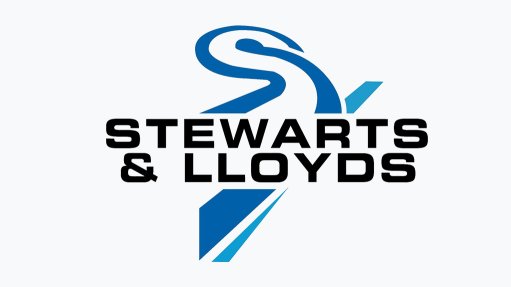Company plays a role in the future of cement industry
South African cement manufacturer AfriSam has been developing composite technology cements since 2000 to reduce the carbon-intensive Portland clinker content of cement. As a result, when the National Building Regulations published its green-building requirements, AfriSam set the industry standard with its C-Tech cements.
“AfriSam’s C-Tech cement and products offer customers guaranteed quality performance and peace of mind, as it reduces the carbon footprint of concrete, which is the most widely used material measured by tonnage,” says AfriSam marketing manager Victor Bouguenon.
The mineral components of C-Tech cement use significantly less carbon than Portland clinker, with C-Tech products subsequently having an inherently smaller carbon footprint.
Bouguenon notes that the future of cement, as building materials, lies in its ability to be flexibly produced, with reduced carbon footprints, which would enable low carbon designs without compromising durability and performance.
“We have really pushed boundaries with products such as low-carbon cement. In this regard, we are setting the benchmark in South Africa,” says AfriSam Centre of Product Excellence manager Mike McDonald.
Cement and Carbon
In terms of its embedded carbon, concrete is a benign product associated with relatively little carbon dioxide (CO2) per unit mass when compared with other materials such as metals, glass and polymers.
“Sustainability is about preserving our natural resources and treading lightly on the planet. Concrete is a fantastic building material. However, about 13% of concrete comprise of cement, which is calculated to contribute about 5% of the world’s anthropogenic CO2. This disturbing fact has prompted companies, such as AfriSam, to see what they can do in this regard,” says McDonald.
While pure Portland cement has been used effectively for more than a century worlwide, its high carbon footprint, compared with composite cement, renders it obsolete.
AfriSam produces composite cement using additives such as pulverised fly ash (PFA), ground-granulated blast-furnace slag (GGBFS) and limestone as partial replacements for the cement. Fly ash is a by-product of coal-fired power stations, while GGBFS is derived from the steel industry. The pozzolanic properties of these additives mean they behave like cements in the presence of cement or lime.
Not only does using by-products from other industries reduce the environmental impact of cement, it also enhances the performance of composite cement to the extent that it offers significant advantages over pure Portland cement.
AfriSam’s knowledge of composite cement and the use of admixtures continues to provide the product with a competitive edge, technically and commercially.
Benefits of C-Tech
The main advantages of using C-Tech are improved workability, low heat of hydration, increased resistance to a chemical attack, reduced permeability and, therefore, superior corrosion protection of steel reinforcing. Portland clinker is carbon intensive, owing to the nature of its manufacturing, which includes the decomposition of limestone into CO2 and lime through a coal-fired process.
Despite recent advances in kiln design and alternative low-energy clinkers, the greatest carbon savings can be made by reducing the Portland clinker content through the inclusion of suitably activated limestone, PFA and GGBFS.
Cement and concrete containing PFA and GGBFS continue to grow in strength beyond 28 days, achieving higher ultimate strength than the targeted concrete strength,
“The addition of mineral components using AfriSam’s C-Tech technology ensures major savings in imbedded energy and natural resources, slashing the carbon emissions associated with pure cement production. For AfriSam, there is no doubt that composite cement is the way of the future as we endorse environmental responsibility and sustainable construction,” concludes McDonald.
Article Enquiry
Email Article
Save Article
Feedback
To advertise email advertising@creamermedia.co.za or click here
Press Office
Announcements
What's On
Subscribe to improve your user experience...
Option 1 (equivalent of R125 a month):
Receive a weekly copy of Creamer Media's Engineering News & Mining Weekly magazine
(print copy for those in South Africa and e-magazine for those outside of South Africa)
Receive daily email newsletters
Access to full search results
Access archive of magazine back copies
Access to Projects in Progress
Access to ONE Research Report of your choice in PDF format
Option 2 (equivalent of R375 a month):
All benefits from Option 1
PLUS
Access to Creamer Media's Research Channel Africa for ALL Research Reports, in PDF format, on various industrial and mining sectors
including Electricity; Water; Energy Transition; Hydrogen; Roads, Rail and Ports; Coal; Gold; Platinum; Battery Metals; etc.
Already a subscriber?
Forgotten your password?
Receive weekly copy of Creamer Media's Engineering News & Mining Weekly magazine (print copy for those in South Africa and e-magazine for those outside of South Africa)
➕
Recieve daily email newsletters
➕
Access to full search results
➕
Access archive of magazine back copies
➕
Access to Projects in Progress
➕
Access to ONE Research Report of your choice in PDF format
RESEARCH CHANNEL AFRICA
R4500 (equivalent of R375 a month)
SUBSCRIBEAll benefits from Option 1
➕
Access to Creamer Media's Research Channel Africa for ALL Research Reports on various industrial and mining sectors, in PDF format, including on:
Electricity
➕
Water
➕
Energy Transition
➕
Hydrogen
➕
Roads, Rail and Ports
➕
Coal
➕
Gold
➕
Platinum
➕
Battery Metals
➕
etc.
Receive all benefits from Option 1 or Option 2 delivered to numerous people at your company
➕
Multiple User names and Passwords for simultaneous log-ins
➕
Intranet integration access to all in your organisation














